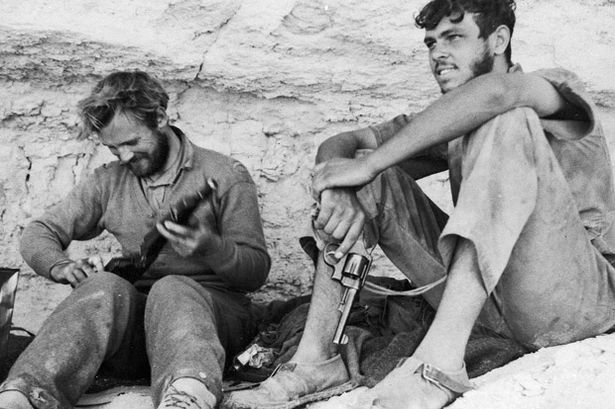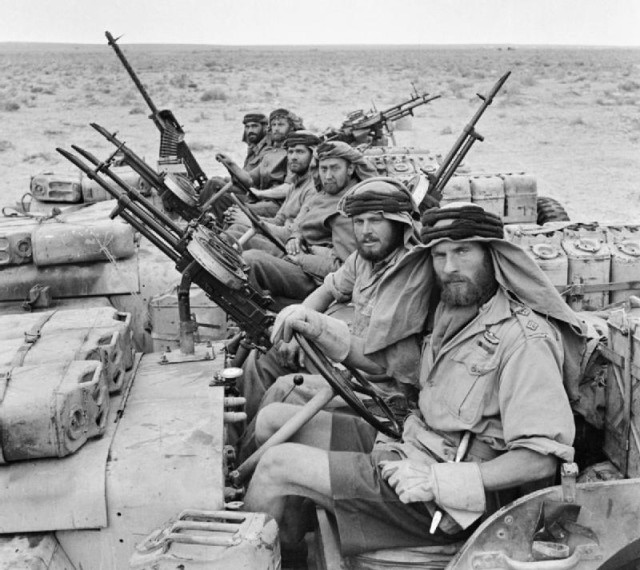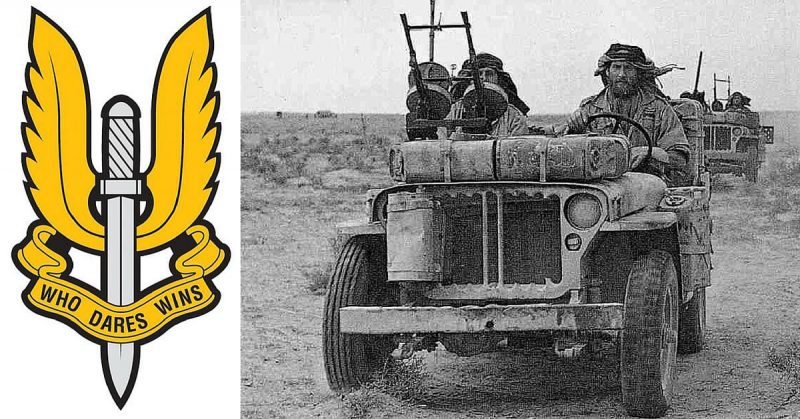Get to know the story of the brave and daring five-men SAS raid deep into German General Erwin Rommel’s territory in North Africa that convinced British officers that the special forces was a “weapon to be reckoned with” during the Second World War.
The Scenario
Almost 74 years ago in the inky Libyan Desert, five men – one of them a former hotelier – penetrated a German camp and blew off 37 aircraft of the enemy, thus, cementing the status of the SAS.
The daring deed of the five SAS men was one of the major reasons why the British top officers in the Second World War became convinced that the elite fighting force – a brainchild of David Stirling – was an “effective concept”, as the author Gavin Mortimer described the Special Air Service in his book, The SAS in World War II: An Illustrated History.
The Story

Sergeant Jeff Du Vivier, a Londoner, who left his catering job after the outbreak of World War Two to join the army, was one of the five SAS men who did the daring mission that had a huge effect on the German forces.
In his letter home to his mother, who he affectionately addressed as “Dear Old Ma”, he vividly described how he and his four other comrades planted bombs on the war planes in the dead of the night and watched them as they blew up leaving the enemy’s airfield “light up like daylight”. Sergeant Du Vivier’s letter was one of the sources Mortimer used for his book.
The Mission

After leaving his catering job, Du Vivier became one of the first – the original- SAS members. He joined the Special Air Service Summer of 1941.
However, the first desert raid he got involved in which was in November that same year ended badly. Thirty-three out of the fifty-five men in that said mission were either killed or captured by the enemy. But the men remained undaunted and by December, they went through another mission successfully. They were able to blow up fourteen enemy planes and disabled ten more.
After that successful raid, Du Vivier, along with four other SAS men, were assigned to do the mission in Ajdabiya in Libya. The group – comprised of one officer, two sergeants, and two privates – were taken within the ten-mile mark to the German camp they were targeting in the dead of the night. Then, they did the rest of the journey getting there on foot. Each one was carrying with eight-timebombs – known as the Lewes bombs – along with two days’ worth of iron portions and water.
Du Vivier described how throughout their mission, the weather had been cold and rainy which he noted was a good thing as the Germans, according to him, hated to fight in bad weather.
That night, they rested a little by banding together for warmth and sipping from rum flasks they brought with them. When day broke out, seeing that they were in full view of the German camp they were targeting, they crawled back on their bellies and hid behind foot-high rocks. Du Vivier wrote that the rocks covered them enough as long as they stayed flat. They, then, spent that whole day observing their target.
When darkness blanketed the place once again, the five SAS men went through the camp as quick as they could until they reach the aerodrome. Here, they planted the bombs they brought with them onto forty Italian and German fighter planes.
Du Vivier went on to relate in his letter how he found a sleeping sentry under a Savoya bomber wing who he proceeded to cover with a Tommy gun. He also placed a bomb on the plane’s wing, just above the sentry’s head. The last bomb the five men SAS team planted was in the enemy’s weapons room before they fled. A crescendo of explosions followed.

“What chaos! The poor old Jerries were far too bewildered with the goings on to worry about 5 very ordinary looking men hurrying through their camp away from the scene of devastation,”
Du Vivier said in his letter.
Later on, the RAF arrived in the fire-illuminated camp and started to drop down their heavy bomb loads on the hangar and the town.
The undertaking of this daring mission was hailed by many back in the home front with the media, following the worrying progress the Germans were making in North Africa, going in a frenzy about its success. Nevertheless, Du Vivier did hint in his letter how civilians might find it hard to believe that only five SAS men undertook the great feat.
He ended his letter by saying that though he didn’t know what star he was born under but it sure was a lucky one.
Du Vivier was awarded a medal for his bravery and went on to serve in the British Army in the Second World War until 1945 when he was sent home after getting shot. He went on to spend his civilian life as a restaurant manager and enjoyed sixty-three years of blissful marriage with his wife, Rea, whom he met in 1940 during his training in the army.
Sergeant Du Vivier passed away five years ago – in 2010 – but his heroism lives on, along with the four other SAS men who were with him that fateful mission, in Mortimer’s book.
